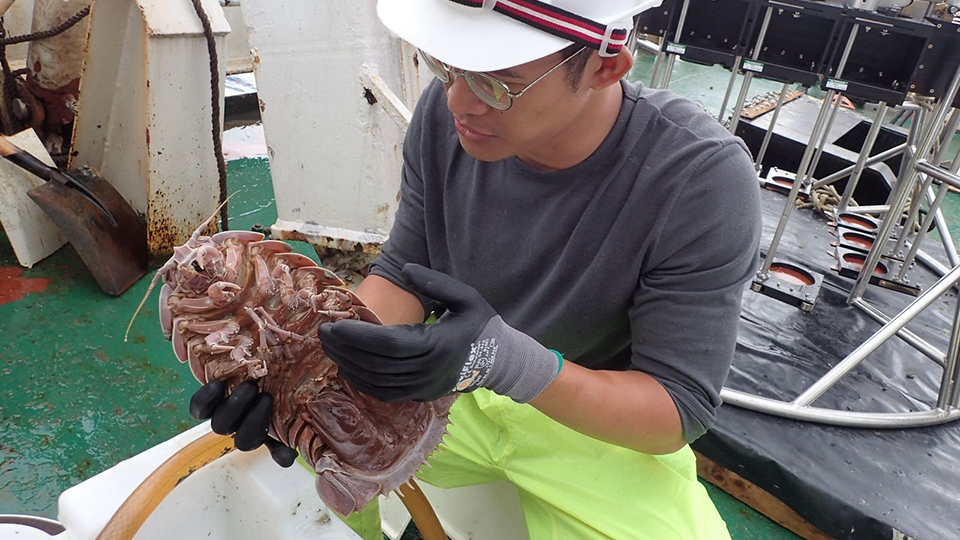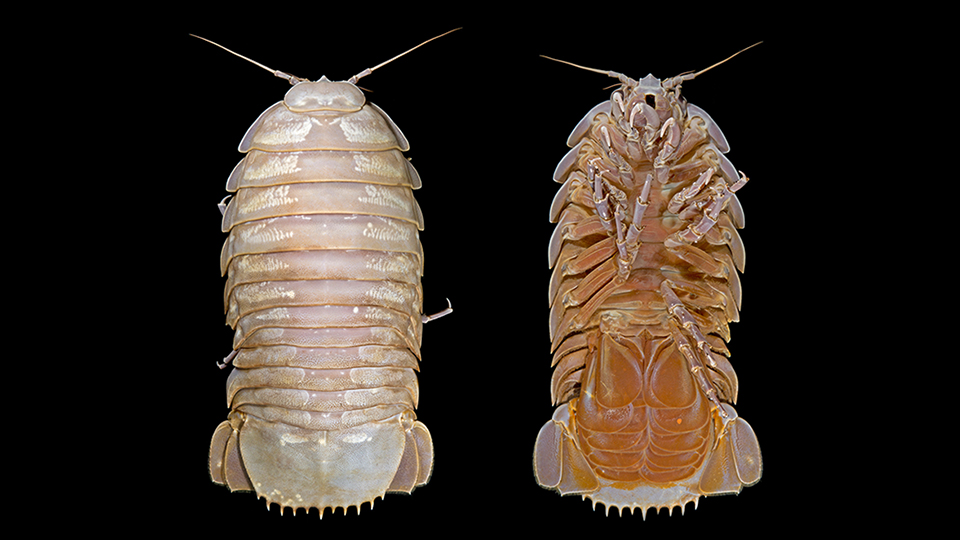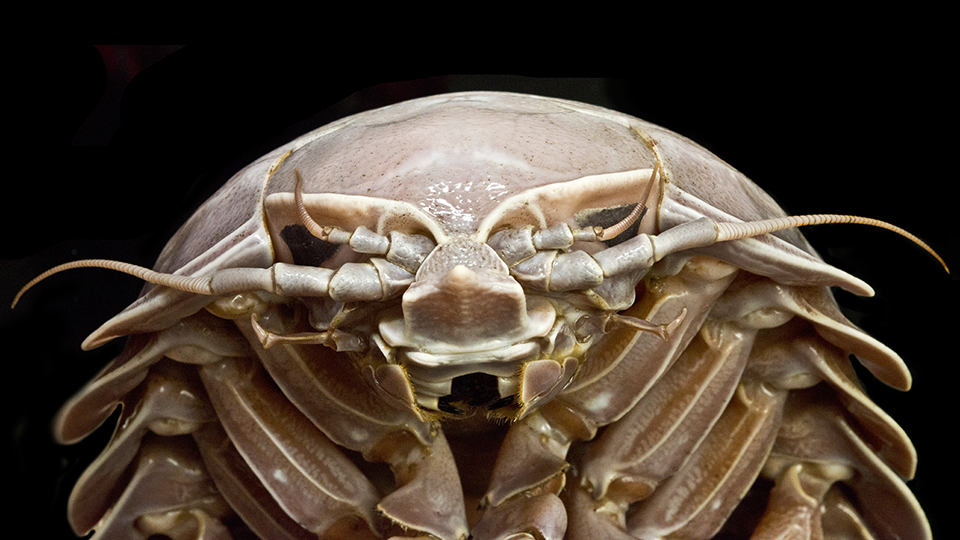New species of “supergiant” isopod uncovered
27 July 2020
A new species of deep-sea giant isopod, which was named Bathynomus raksasa, has been described by researchers from the National University of Singapore (NUS) and the Indonesian Institute of Sciences (LIPI). This is the first time that the genus Bathynomus has been collected in Indonesian waters and it is also one of the largest known to science.
Marine isopods are a diverse group of animals with various feeding strategies, such as scavenging, filter feeding, and parasitism. They can be found from the shallow shore, all the way down to the deep sea. Most deep-sea isopods are less than 10 millimetres in length, with the exception of the giant isopods from the genus Bathynomus, which can grow up to half a metre in length. These giant isopods exhibit what is known as deep-sea gigantism, in which some animals found in the deep sea tend to be much larger than their relatives in shallow waters.
The new giant isopod species was described from two specimens, a male and a female, collected off the southern coast of West Java in Indonesia, from a depth of between 950 and 1,260 metres, during the South Java Deep Sea Biodiversity Expedition 2018 (SJADES 2018).

Research associate Muhammad Dzaki Bin Safaruan holds up a giant isopod, Bathynomus raksasa, onboard the Indonesian research vessel Baruna Jaya VIII during the expedition
The voyage was led by two chief scientists: Professor Peter Ng, Head of the NUS Lee Kong Chian Natural History Museum (LKCNHM), and Professor Dwi Listyo Rahayu, Senior Research Scientist at the Research Center for Oceanography of LIPI. The 31-member expedition team comprised NUS researchers from LKCNHM and the Tropical Marine Science Institute (TMSI), as well as Indonesian researchers from LIPI. The 14-day journey was a joint initiative under the RISING50 programme which celebrated the 50 years of diplomatic relations between Singapore and Indonesia. It affirmed the depth and diversity of the long-standing collaboration between the academic and scientific communities of both countries.
The description of the new isopod species was led by Dr Conni Sidabalok from the Research Center for Biology of LIPI and Ms Helen Wong from TMSI and the St. John’s Island National Marine Laboratory. They studied and compared the isopod specimens from the expedition with existing material from the Zoological Reference Collection in LKCNHM. The distinguishing features were identified, and the species was confirmed to be new to science. Their description of the new species was published in the journal ZooKeys on 8 July 2020.

Ventral and dorsal view of the female Bathynomus raksasa. Photo: SJADES
“The identification of this new species is an indication of just how little we know about the oceans. There is certainly more for us to explore in terms of biodiversity in the deep sea of our region,” enthused Ms Wong.
The discovery of Bathynomus raksasa is one of the new species identified from SJADES 2018. Researchers from both countries are working closely together to study and identify over 12,000 specimens that were collected during the expedition, and more findings are expected be published soon.
References
Sidabalok CM, Wong HP-S, Ng PKL (2020) Description of the supergiant isopod Bathynomus raksasa sp. nov. (Crustacea, Isopoda, Cirolanidae) from southern Java, the first record of the genus from Indonesia. ZooKeys 947: 39-52. https://doi.org/10.3897/zookeys.947.53906
https://news.nus.edu.sg/research/new-species-supergiant-isopod-uncovered





